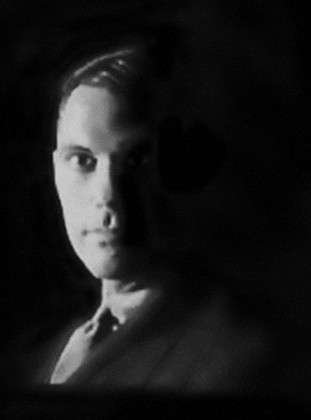 Bennett Alfred Cerf, May 25, 1898 – August 27, 1971, was an American publisher, one of the founders of American publishing firm Random House. Cerf was also known for his own compilations of jokes and puns, for regular personal appearances lecturing across the United States, and for his television appearances in the panel game show What’s My Line?
Bennett Alfred Cerf, May 25, 1898 – August 27, 1971, was an American publisher, one of the founders of American publishing firm Random House. Cerf was also known for his own compilations of jokes and puns, for regular personal appearances lecturing across the United States, and for his television appearances in the panel game show What’s My Line?
Cerf attended Townsend Harris High School, the same public school as publisher Richard Simon and playwright Howard Dietz. He spent his teenage years at 790 Riverside Drive, an apartment building in Washington Heights that was home to two friends who became prominent as adults: Howard Dietz and Hearst newspapers financial editor Merryle Rukeyser. He received his Bachelor of Arts from Columbia University in Harlem (1919) and his Litt.B. (1920) from its School of Journalism. After graduation, he briefly worked as a reporter for the New York Herald Tribune and for some time in a Wall Street brokerage. He then was named a vice-president of the publishing firm Boni & Liveright.
In 1925, Cerf and Donald S. Klopfer formed a partnership to purchase the rights to the Modern Library from Boni & Liveright, and they went into business for themselves. They increased the popularity of the series and, in 1927, they began publishing general trade books which they had selected “at random.” This began their publishing business, which in time they named Random House. It used as its logo a little house drawn by Cerf’s friend and fellow Columbia alumnus Rockwell Kent.
Cerf’s talent in building and maintaining relationships brought contracts with such writers as William Faulkner, John O’Hara, Eugene O’Neill, James Michener, Truman Capote, Theodor Seuss Geisel, and others. He published Atlas Shrugged, written by Ayn Rand, even though he vehemently disagreed with her philosophy of Objectivismadmired her “sincerity” and “brillian[ce],” and the two became lifelong friends.
In 1933, Cerf won United States v. One Book Called Ulysses, a landmark court case against government censorship, and thereafter he published James Joyce’s unabridged Ulysses for the first time in the United States. (One chapter had been published in Margaret Anderson’s and Jane Heap’s The Little Review, a Chicago-based literary magazine, which had led to its being found “a work of obscenity.”) In 1933, Random House had the rights to publish the book in the United States, and they arranged for a test case to challenge the implicit ban so as to publish the work without fear of prosecution. The publisher therefore made an arrangement to import the French edition of the book and to have a copy seized by the United States Customs Service when the ship arrived carrying the work. Despite advance warning to Customs of the anticipated arrival of the book, the local official declined to confiscate it, stating that “everybody brings that in.” He and his superior were finally convinced to seize the work. The United States Attorney then took seven months before deciding whether to proceed further. The Assistant U.S. Attorney assigned to assess the work’s obscenity felt that it was a “literary masterpiece”—yet he also found it obscene within the meaning of the law. The office, therefore, decided to take action against the work under the provisions of the Tariff Act of 1930, which allowed a district attorney to bring action. Cerf later presented the French-language book toColumbia University.
In 1944, Cerf published the first of his collection of joke books Try and Stop Me, with illustrations drawn by Carl Rose. A second book Shake Well Before Using was published in 1949. It was at this time that he became a member of the Peabody Awards Board of Jurors, serving from 1946 through 1967, then returning to the board from 1970 to 1971. Additionally, he served as Chair Juror of the Peabody Jurors Board from 1954 to the end of his first term in 1967[7] and published a weekly column titled “The Cerf Board,” in the Sunday supplement magazine “This Week.”
In the early 1950s, while maintaining a Manhattan residence, Cerf bought an estate at Mount Kisco, New York which became his country home for the rest of his life. A Mount Kisco street named Cerf Lane runs from Croton Avenue and is named after him. Cerf married actress Sylvia Sidney on October 1, 1935; they divorced seven months later on April 9, 1936. He married Hollywood actress Phyllis Fraser, a cousin of Ginger Rogers, on September 17, 1940. They had two sons, Christopher and Jonathan.
In 1959, Maco Magazine Corporation published what became known as “The Cream of the Master’s Crop,” a compilation of Cerf’s jokes, gags, stories, puns, and wit.
Cerf was interviewed in 1967 and 1968 by Robin Hawkins, a freelancer working for the Oral History Research Office at Columbia University. He claimed that, of all the awards which he’d received in his life, he was “genuinely proud of” those bestowed on him by humor magazines The Yale Record and The Harvard Lampoon.
Cerf was the subject of Jessica Mitford’s exposé, published in the June 1970 issue of Atlantic Monthly, which denounced the business practices of the Famous Writers School which Cerf had founded.
Cerf was portrayed in the film Infamous (2006) by Peter Bogdanovich. S.J. Perelman’s feuilleton “No Dearth of Mirth, Fill Out the Coupon” describes Perelman’s fictionalized encounter with a jokebook publisher named Barnaby Chirp who is a caricature of Cerf. Another caricature of Cerf is named Harry Hubris and portrayed by Bert Lahr, and appears in Perelman’s 1962 play The Beauty Part. He was also referred to as publisher “Bennett Blake” in an episode of The Patty Duke Show.
Cerf died[how?] in Mount Kisco, New York, on August 27, 1971, aged 73, survived by his wife and sons.
In 1977 Random House published his autobiography, which he had titled At Random: The Reminiscences of Bennett Cerf.
In The Simpsons (2002) S13/E21, Frances Sternhagen, who was disguised as elderly shut-in, Mrs. Bellamy, likens Homer Simpson’s way with words to that of Bennett Cerf.
Bennett Cerf Drive just outside the City of Westminster in Carroll County, Maryland is named after him. This is the location of one of two Random House distribution facilities in the U.S., known as the Random House Westminster Distribution Center & Offices, and also a park, Bennett Cerf Park.
Via Source
Check out our Harlem World Magazine Harlem history page on Facebook HERE.
Become a Harlem Insider!
By submitting this form, you are consenting to receive marketing emails from: Harlem World Magazine, 2521 1/2 west 42nd street, Los Angeles, CA, 90008, https://www.harlemworldmagazine.com. You can revoke your consent to receive emails at any time by using the SafeUnsubscribe® link, found at the bottom of every email. Emails are serviced by Constant Contact








